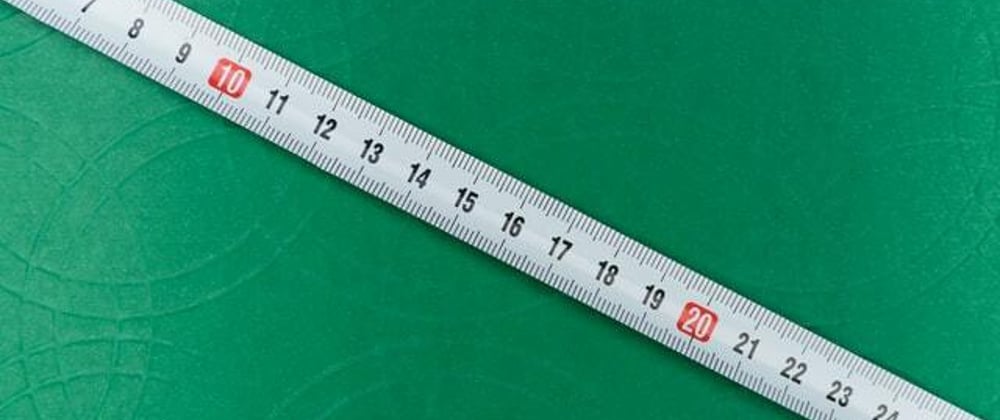As a Frontend Developer, it is sometimes humbling to know just how much you don't know about the basic building blocks of the web.
The amount of tools and techniques available to us is A LOT! So it's no surprise we often just pick whatever solves our immediate problem and call it a day
Let's take a look at one of those rarely used tools, the CH CSS unit.
CH Unit Definition
According to the spec
A CH unit is the advance measure of the “0” (ZERO, U+0030) glyph found in the font used to render it. (The advance measure of a glyph is its advance width or height, whichever is in the inline axis of the element.)
Translation: One CH is equal to the space one zero character occupies for a given font. So if we write 00, that's 2ch.
All Characters Are Not Equal
Notice how the definition specifically mentions "0" (zero)? That's important because not all characters in a font are equal (except for monospaced fonts e.g. Courier)
Now that we know what the ch unit is, let's consider where it might be appropriate to use it
Usage
I asked this question on Twitter before writing this blog post
 How would you style this to ensure the text breaks exactly the way it looks? If your first thought is <br>, I have something better that eliminates the need for that extra markup. Blog post coming up tomorrow
How would you style this to ensure the text breaks exactly the way it looks? If your first thought is <br>, I have something better that eliminates the need for that extra markup. Blog post coming up tomorrow
#CSS #100DaysOfCode18:35 PM - 22 Aug 2021
It's no surprise people suggested using some sort of line break approach, even the source of the image, the nextjs site, uses <br> tags to create the markup
This approach works for static content but cannot be used for dynamic content, at least not without JavaScript
I've created a simple example to show how we can use max-width to achieve this by setting the value to the maximum number of characters we want to appear on one line.
Pros
- Suitable for dynamic content
- Better than using
pxor other units for paragraph width - The appearance doesn't change when the font size changes
Cons
- It can be a pain counting the number of characters
- Size can be off for Proportional fonts (non-monospaced), which is the vast majority of fonts
Another scenario where the ch unit might make sense to define width is a fixed-width text input (e.g. year input - 4ch)
Conclusion
The ch unit is certainly not what you want to use in most cases, but it really shines where it makes the most sense, character measurement












Latest comments (8)
You failed to mention
exwhich is the fraternal twin toch.exis the height of a lowercase x in the computed font.chis a width measurement, whileexis vertical. I have foundexuseful in::beforeand::afterelements when I'm trying to position, space, and size things that need to appear inline. (also,excombined withchcould be a useful way to size with non-monospace fonts)You can't mention something you've never heard about @paceaux 😏
Thanks for this new knowledge. I'm reading up on it now
This is awesome! Thank you!
This is an interesting article, but what I am missing here is a comparison with the em unit.
I have an extraordinarily long (read: boring) review of the behavior of
emas it compares toex(which does the same thing asch)blog.frankmtaylor.com/2012/01/25/c...
Hmmm. I didn't really think of any comparisons when I was putting this together. I could make a note to write about this though
This is really nice 👍
Nice, might actually use this sometime